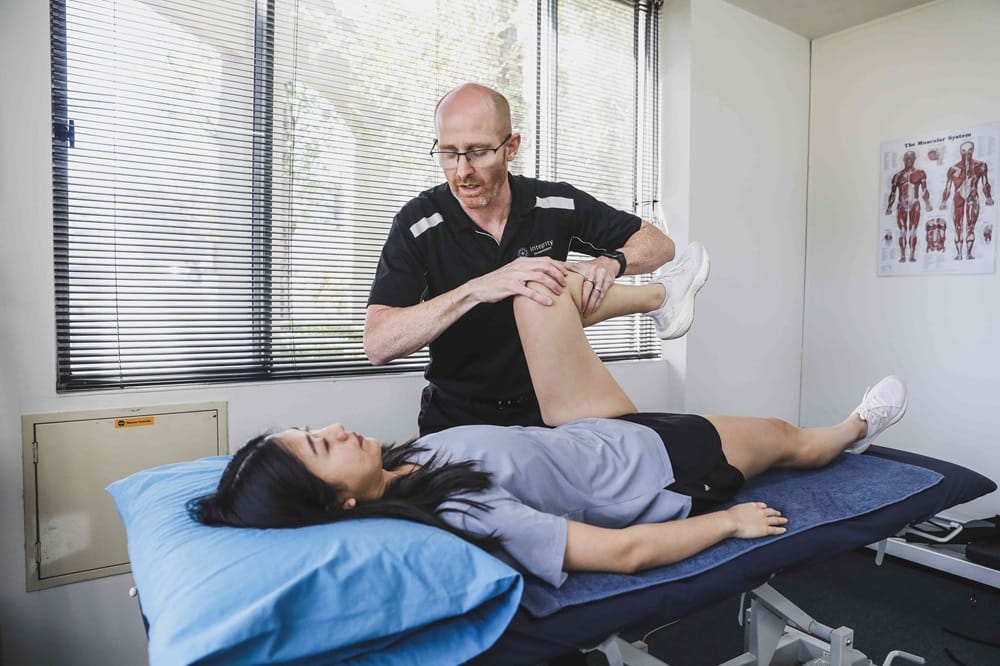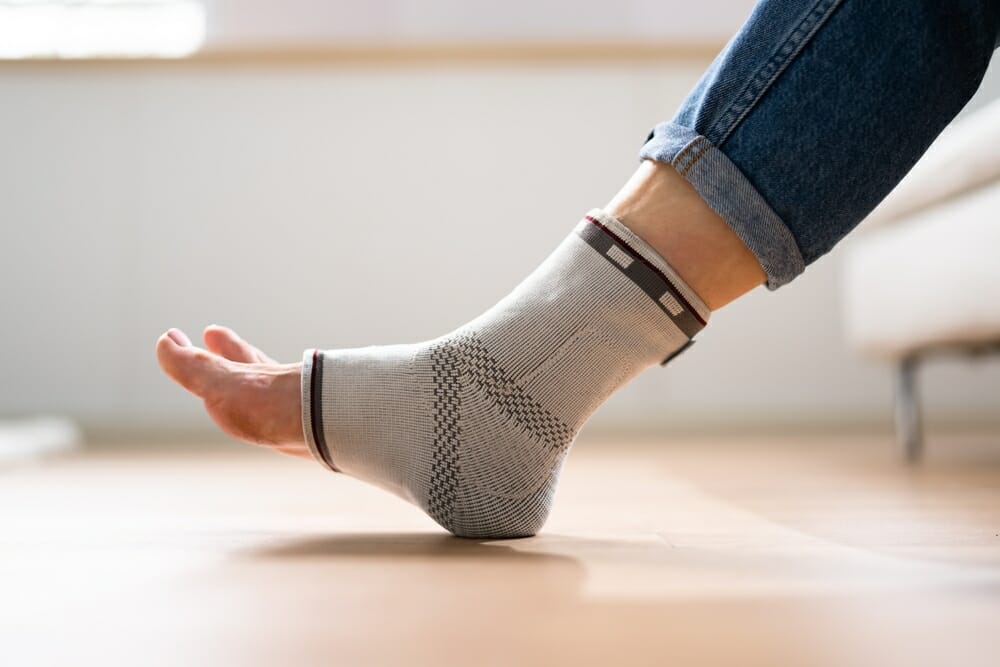
Ankle sprains are a very common injury which can happen to people of all ages. They can happen when more than the normal amount of force or movement is placed on the ligaments which support the ankle joint.
The ankle has two joints, one is for bending the foot up and down while the other joint turns the foot in and out. Typically, it is the joint that turns the foot in and out that is sprained during an injury. This usually happens when the foot is in a pointed position (its least stable position) and the foot turns inwards (ankle rolls outwards). This causes the ligaments on the outer side of the ankle to become stretched and can possibly tear if they are under enough strain.
Sprained ankle recovery time can vary depending on the type of ankle sprain. These types are:
- Grade 1 (mild) – involving a mild overstretching of the ligament. This takes approximately 3-5 weeks to heal
- Grade 2 (moderate) – involving partial ligament tearing. This takes approximately 4-6 weeks to heal
- Grade 3 (severe) – this is a complete tear of the ligament, taking approximately 3-6 months to heal, often with surgery.
Ankle sprains can be caused by:
- Landing awkwardly on your foot after a jump
- Twisting your ankle during a fall
- Engaging in exercise, walking or sports activities on uneven surfaces

Symptoms
When a sprained ankle injury occurs you will likely experience:
- Swelling
- Pain
- Bruising
- Cracking or popping sound at the time of the injury
- Ankle instability
- Tenderness when you touch the affected ankle
- Difficulty standing or walking on the injured foot
In more severe cases, there could be a deep sharp pain in the ankle joint or a pain between your lower leg bones after the injury. If your symptoms are severe, you may have significantly damaged the ligaments in your ankle or may be suffering from a fracture—if you suspect this, contact your healthcare professional.
Diagnosis
Getting your ankle injury diagnosed is important to ensure the injury is not more than a sprain—you should see a healthcare professional if you can’t move or bear weight on your ankle, or you’re experiencing numbness in the injured area. This could be a sign of a fracture.
An experienced physiotherapist is skilled in the assessment and diagnosis of sprained ankles. They will do a thorough assessment as well as aiming to understand the mechanism of injury to help determine how severe the sprain is.
You may be required to undergo an X-ray, MRI or CT scan to determine if there are severe ligament or bone injuries present. However, most of the time this is not necessary and a clinical assessment by an experienced physio is sufficient.
Treatment
Sprained ankle treatment can vary depending on the severity of the injury. Some mild sprains heal well with simple at-home care, while others require attention by a physiotherapist in order to heal correctly. Sprained ankle recovery time can sometimes be frustrating, however it is important not to rush healing so as to not cause further injury.
Practising prevention strategies, such as warming up well before an activity and wearing supportive footwear will help your body build strength in order to avoid ankle sprains in the future.
At-home
For self-care sprained ankle treatment, follow the RICE strategy for the first 2-3 days on the affected ankle.
- R: Rest the ankle
- I: Ice pack for 20 minutes, three to four times per day
- C: Apply compression if needed—an elastic bandage will help stop any swelling, do not cut off circulation by wrapping too tightly
- E: Elevate the foot
If your symptoms have not improved or are worsening after these 2-3 days of at-home sprained ankle recovery time, visit your healthcare professional to discuss the best treatment options appropriate for you.

Recovery
Initially resting the ankle is necessary to avoid further pain and injury, however it is important to return to normal activity as early as possible. Too much protective behaviour—such as limping while walking—can put you at a higher risk of another injury in the future and can encourage an abnormal walking pattern, putting undue stress on your ankle. This will also benefit your sprained ankle recovery time.
Rehabilitation
To facilitate a faster recovery and return to normal sports or activity, a supervised exercise program created by a physiotherapist can be implemented as part of your sprained ankle treatment. This is a common type of treatment to help prevent re-injury, prevent future ankle sprains and to restore strength to the ankle.
Physical therapy aims to prevent the long-term risk of chronic ankle instability that can occur due to sprains that are not treated correctly.
- A good physical therapy exercise program includes:
- Restoring normal range of motion
- Strengthening exercises
- Rebuilding balance
- Rebuilding confidence in the ankle
- Progressively introducing higher impact loads
We can help improve your sprained ankle recovery time
If you’re looking for a physio in Como and surrounds, visit the friendly and experienced team at Integrity Physio. We can help get you on the road to recovery as quickly as possible, and strengthen your ankle so that repeated injury does not occur. Book an appointment today!




